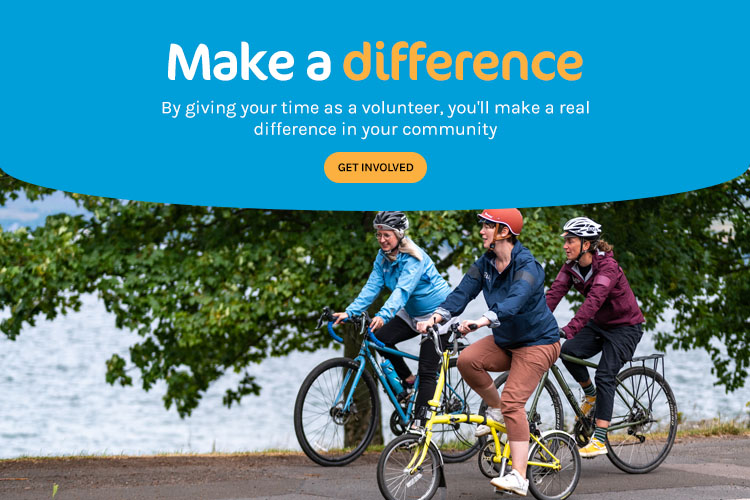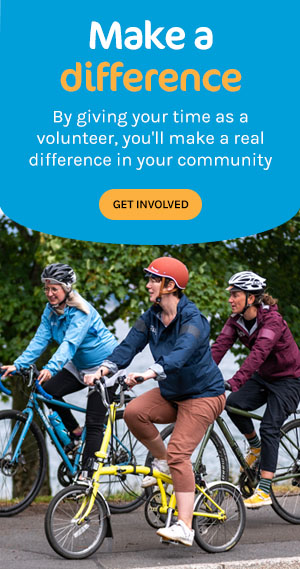
Communicating with your councillors
Communicating with your councillors
Once you have an understanding of what different local government organisations do, the next step is to get in touch and open a conversation about Space for Cycling.
This guide gives some tips on how to engage with your councillors. Remember, local authorities can differ massively. Use the following as a guide, not a set of instructions.
When to contact
Consider what might be on the council’s agenda at any one time and how that may affect the way you communicate.
For example, if there is an election, you may want to get candidates signed up to support your campaign, or ask parties to make Space for Cycling commitments in their manifestos.
If an election has just finished, you have a perfect excuse to email new councillors, congratulate them, introduce yourself and get cycling on their agenda early.
If there are no elections, simply get in touch with existing councillors.
Who to contact
Councillors of interest to you are:
- Councillors from the ruling party. This is particularly essential if you are working towards getting a motion passed by the council.
- Councillors who have pledged support to Space for Cycling. Since the latest local elections, some of the data on the map is out of date but some names should still be in post. Just cross-check by searching for them on Google before contacting them.
- The ‘Cycling Champion’, if your council has one.
- One of your own ward Councillors.
Any who fit more than one of the above boxes.
How to contact
Start by sending a short and polite email, inviting councillors to an informal meeting. It may be best to initially meet councillors individually or in small groups. You can contact your councillors using writetothem.com.
Feel free to use our draft email.
Communicating with your councillors
The following are some general points on how to communicate with your councillors, whether by email, phone or face to face.
Be informed
Read our briefings and ten common questions page in preparation. Some briefings you may find particularly useful are the briefings on air quality, local transport and the economy.
If you are meeting with councillors, take copies with you to give out. Likewise copies of the Space for Cycling Guide for Decision Makers. Get in touch for hard copies.
Do a little research on whoever you are contacting or meeting. Google their name with key words such as “cycling”, “transport”, “air quality” etc.
Look out for any recent news stories that are relevant to your proposals. For example, has congestion or air pollution been in the news in your area? Is there a big highways project planned?
Be helpful
Offer solutions – don’t just complain about the status quo. For example, if congestion is an issue in a particular area, show your councillors how cycling can address it.
You may wish to make a cycle network tube map. Tube maps are a useful tool to illustrate how a network could look and where the gaps are in the existing network.
Don’t assume any prior knowledge. Most councillors will not have any knowledge about transport planning or cycling. Explain your problem and proposal to them as you would any of your friends. Jargon is unlikely to impress.
Switch on the charm!
Your job is to win people over. Being aggressive or short-tempered will only switch people off.
Consider their perspective
Your councillors might be reluctant to start making bold decisions in favour of cycling if it is not clear how their constituents and voters are likely to react.
Consider questions your councillors might have. For example, how much local support is there? How much will your suggestions cost? You don’t need to have answers to these questions immediately but you will do well to show you have considered them.
Councillors may be more likely to be amenable to your suggestions if you can demonstrate that local support exists – perhaps through a petition or a survey of local residents. See our guide to demonstrating support.
Make it clear that improving conditions for people wishing to cycle is not about you as a cyclist, but about a better community as a whole.
Try to paint a picture that shows nicer/safer community spaces that children and the elderly can freely travel around and enjoy being in. Discuss the impact on the environment, the local economy and congestion. Read our briefings for more information on these topics.
Resources
If you are working towards getting a Space for Cycling motion passed, take a copy of the draft motion along.
Give this presentation. It is editable so you can include local-specific examples of cycle infrastructure or adapt your arguments to a local context.
The idea of lobbying your councillors may sound intimidating. In practice though they have been elected to represent you and listen to your views.
Tips:
- Amend your messaging to reflect current events - has there been an election recently? Has anything that could be relevant to cycling been in the local news recently?
- If you are working towards getting a motion passed by your council, the support of the ruling party will be essential.
- Ensure you are well informed on key issues
- Offer solutions to problems - don't just complain about the status quo
- Consider their perspective - why is it in a councillor's interest to act on your proposals?
- Do not be aggressive
- Do not use jargon
Further reading
This guide is written as part of a larger body of guides to help with effective campaigning and geared towards getting a Space for Cycling motion passed by your council:
- Draft Space for Cycling motion
- Draft letter to councillors
- Understanding your local authority
- Working with your council to pass a Space for Cycling motion
- Getting and demonstrating demonstrating public support
- Forming a cycle campaign group
- Working with the media
Contact
If you have any questions about this motion or about the Space for Cycling campaign more broadly, please contact us on:
tom.guha@cyclinguk.org
01483 238 321











